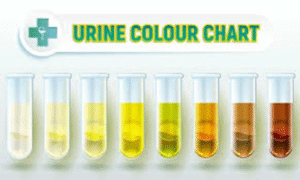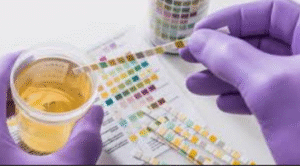Have you ever wondered what color your urine is by looking at the toilet bowl? While it might seem like an awkward topic for conversation, what your urine color says about your health is actually one of the most important questions you should be asking yourself regularly.
Your body communicates with you in fascinating ways, and the color of your urine serves as a window into your overall health status, hydration levels, and potential medical conditions that might require attention. From pale straw to amber and even unusual colors like pink, green, or blue, each shade tells a unique story about your wellbeing.
Understanding what your urine color says about your health can be an empowering tool which can help you discover how you can use this information to improve your wellness journey.

Understanding Urine Colors and Their Meanings
Pale Straw to Transparent Yellow
The gold standard of healthy urine appears as a pale straw color or transparent yellow. This color shows that your kidneys are healthy and that you are drinking enough water. When you’re optimally hydrated, your urine becomes diluted, resulting in this lighter shade. Maintaining this color throughout most of the day suggests excellent hydration habits and generally good health.
Amber or Honey
Urine with a darker yellow or amber hue indicates that the urine is concentrated because there is less water in it. While not immediately concerning, this color serves as your body’s way of saying you could use more fluids. When your urine color says you’re heading toward dehydration, it’s the perfect time to reach for water or hydrating foods before more serious symptoms develop.
Dark Orange or Brown
When urine appears dark orange or brown, it often signals significant dehydration that requires immediate attention. However, these deeper colors can also indicate other issues such as liver problems, bile duct issues, or certain medications.
If increasing your fluid intake doesn’t lighten the color within a day, this might be a signal to consult with a healthcare provider about what your urine color says about your health beyond simple hydration status.
Red or Pink
Alarming as it may seem, reddish or pink urine doesn’t always indicate a serious problem. Sometimes, it simply reflects what you’ve eaten – beets, blackberries, or rhubarb can temporarily tint urine this color. However, red urine can also signal blood presence, which could indicate kidney stones, infections, or other conditions requiring medical attention.
Blue or Green
These unusual colors often result from certain medications, food dyes, or specific health conditions. While rare, blue or green urine typically stems from artificial colorings or certain antibiotics. Some rare genetic conditions can also produce these distinctive colors. In most cases, these colors are temporary and harmless, but persistent unusual coloration warrants a discussion with your doctor.
Cloudy or Milky
Cloudy urine might be a sign of kidney stones, STIs, or urinary tract infections. This appearance occurs when white blood cells, bacteria, or crystallized minerals are present in your urine.
Rather than focusing solely on color, the clarity of your urine provides additional clues about what your urine color says about your health and potential underlying conditions.
How Diet Affects Urine Color
Your dietary choices significantly impact urine color, often creating temporary changes that can either reassure or alarm you unnecessarily. Understanding these connections helps you better interpret what your urine color says about your health when changes occur.
Foods That Affect Urine Color
- Beets, Blackberries, and Rhubarb- These foods contain natural compounds called betalains and anthocyanins that can turn urine pink or reddish, sometimes causing unnecessary concern about blood in the urine.
- Carrots, Sweet Potatoes, and Pumpkin- The high carotenoid content in these orange vegetables can give urine a yellowish or orange tint when consumed in large quantities.
- Asparagus– While not changing urine color significantly, asparagus contains compounds that create a distinctive odor in urine for many people due to sulfur-containing metabolites.
- Food Dyes– Artificial colorings in processed foods, candies, and beverages can sometimes pass through your system and temporarily alter urine color to green, blue, or other unusual shades.
Supplements and Medications
Various supplements and medications can alter urine color:
- B Vitamins – Riboflavin (vitamin B2) commonly turns urine bright yellow or even neon yellow, which is completely harmless.
- Medications – Certain antibiotics, laxatives, and other prescription medications list urine discoloration as a side effect. Examples include rifampin (orange-red), phenazopyridine (orange), and certain chemotherapy drugs (various colors).
- Contrast Dyes- Medical imaging procedures often use contrast dyes that temporarily change urine color as they’re filtered through your kidneys.

Hydration and Kidney Health
The foundation of kidney health and healthy body function is enough hydration. Every day, your kidneys filter between 120 and 150 quarts of blood, eliminating waste and extra fluid that is converted to urine. When you’re dehydrated, this filtering system becomes stressed, potentially leading to concentrated urine and increased risk of kidney stones or urinary tract infections.
The Hydration-Urine Connection
The relationship between hydration and what your urine color says about your health is direct and observable. Your kidneys generate diluted urine with the distinctive pale straw hue when you are sufficiently hydrated. As dehydration sets in, urine becomes more concentrated, darker, and potentially more odorous as waste products become more concentrated.
Chronic dehydration forces your kidneys to work harder, potentially contributing to long-term kidney damage and increasing the risk of kidney stones. By paying attention to what your urine color says about your health and responding appropriately, you’re engaging in an important form of preventive healthcare.
How Much Water Is Enough?
While the traditional ‘eight glasses a day’advice provides a reasonable baseline, individual hydration needs vary based on factors including:
Activity Level Exercise and physical labor increase fluid loss through sweat, requiring additional hydration.
Climate Hot or humid environments accelerate fluid loss through both visible and invisible perspiration.
Health Status Certain medical conditions and medications alter fluid requirements and usage.
Body Size In general, larger people need more fluids to stay well hydrated. Rather than adhering strictly to a predetermined amount, use your urine color as a personalized hydration guide, aim for pale yellow urine throughout most of the day.
Troubleshooting Common Hydration Issues
Even with the best intentions, various challenges can interfere with maintaining optimal hydration. Here are solutions to common problems that affect what your urine color says about your health:
Consistently Dark Urine Despite Drinking Water
Possible Causes
- You might be drinking less than you believe.
- Increased fluid loss through exercise or hot weather
- Certain medications or medical conditions affecting fluid balance
Solutions
- Track water intake precisely using a marked bottle or app
- Increase intake gradually by 8 ounces every few days
- Rather than consuming significant volumes of fluids all at once, spread out your fluid intake over the day.
- Check with a healthcare provider about medication effects
Difficulty Remembering to Drink
Solutions
- Set regular reminders on your phone
- Connect hydration to established habits (drink before each meal, after bathroom breaks, etc.)
- Keep a bottle of water with you at all times to make it visible.
- Use apps specifically designed to track and remind you about hydration

Dislike of Plain Water Taste
Solutions
- Try the flavored water and smoothie recipes provided above
- Experiment with different water temperatures
- Put a little juice into ordinary water.
- Try sparkling water as an alternative
Frequent Urination Concerns
Solutions
- Maintain consistent hydration rather than consuming large volumes at once
- Reduce evening fluid intake if nighttime urination disrupts sleep
- Talk to your healthcare provider if frequent urination persists despite moderation
Water Retention Issues
Solutions
- To balance fluid levels, eat more foods high in potassium, such as avocados and bananas, and less salt, which can lead to water retention.
- Consider if any medications may be contributing to retention
- Maintain regular physical activity to stimulate circulation and fluid movement
When to See a Doctor
While monitoring your urine color provides valuable insights, certain situations warrant professional medical attention regardless of urine appearance:
Persistent Dark Urine
If your urine remains dark amber or brown despite increased fluid intake over 24-48 hours, consult a healthcare provider.
Red or Pink Urine Without Explanation
If you haven’t consumed foods that typically cause reddish urine (like beets) and notice this coloration, seek medical advice promptly.
Pain or Burning During Urination
These symptoms, regardless of urine color, may indicate infection requiring treatment.
Cloudy or Foul-Smelling Urine
These changes often signal infection or other conditions needing medical attention.
Dramatic Changes in Urine Volume
Significant increases or decreases in urine output should be evaluated professionally.
Foamy or Frothy Urine
This appearance may indicate excess protein in the urine and requires medical assessment.
FAQs
Can medications change urine color?
Yes, urine color can be momentarily changed by a variety of drugs. Antibiotics like rifampin can turn urine orange-red, while phenazopyridine (often used for urinary tract discomfort) produces orange urine. Urine color can be altered by certain laxatives, chemotherapy medications, and even some B vitamin-containing multivitamins.
These changes are typically harmless and resolve when the medication is discontinued. Always inform your healthcare provider about unusual urine colors when taking medications.
Even though I drink a lot of water, why is my urine so bright yellow?
Bright yellow urine despite adequate hydration often results from B-vitamin supplements, particularly riboflavin (vitamin B2). This vitamin produces a fluorescent yellow color as it’s processed through your kidneys. Energy drinks, multivitamins, and B-complex supplements commonly cause this effect.
Your body is processing and getting rid of extra water-soluble vitamins that aren’t needed, which is why this color shift is harmless.
Is clear urine a sign of good health?
Though pale yellow urine is a sign of adequate hydration, completely clear urine might suggest overhydration. When you consume more fluid than your body needs, your kidneys work overtime to eliminate the excess, producing very dilute, clear urine.
While occasional clear urine isn’t concerning, consistently colorless urine may indicate you’re drinking more water than necessary, potentially disrupting electrolyte balance. Ideally, urine should have a pale straw color rather than being completely transparent.
How quickly does urine color respond to hydration changes?
Urine color typically responds to hydration changes within 2-4 hours, depending on your metabolism, activity level, and current hydration status. When dehydrated, increasing fluid intake usually lightens urine color within several hours as your kidneys process the additional water.
Similarly, reduced fluid intake will result in more concentrated, darker urine within a similar timeframe. This rapid feedback makes urine color an excellent real-time indicator of your hydration status.
Can food coloring from candies and desserts change the color of urine?
Yes, artificial food colorings in candies, desserts, and brightly colored processed foods can sometimes pass through your system and temporarily change urine color. Blue or green food dyes are particularly noticeable, potentially turning urine shades of blue-green when consumed in large quantities.
This effect is harmless and typically resolves within 24-48 hours as the dyes are completely eliminated from your system. If unusual colors persist beyond this timeframe, consult with a healthcare provider.
Conclusion…
Your urine color provides a simple yet powerful indicator of your overall health and hydration status. By understanding what your urine color says about your health, you gain a valuable tool for monitoring your body’s wellbeing and making necessary adjustments to your fluid intake and diet.
By staying attuned to these natural signals from your body and responding appropriately, you’re taking an important step toward maintaining your overall health and preventing potential kidney issues. Your kidneys—and your entire body—will thank you for this simple yet significant attention to one of your body’s most important communication systems.



